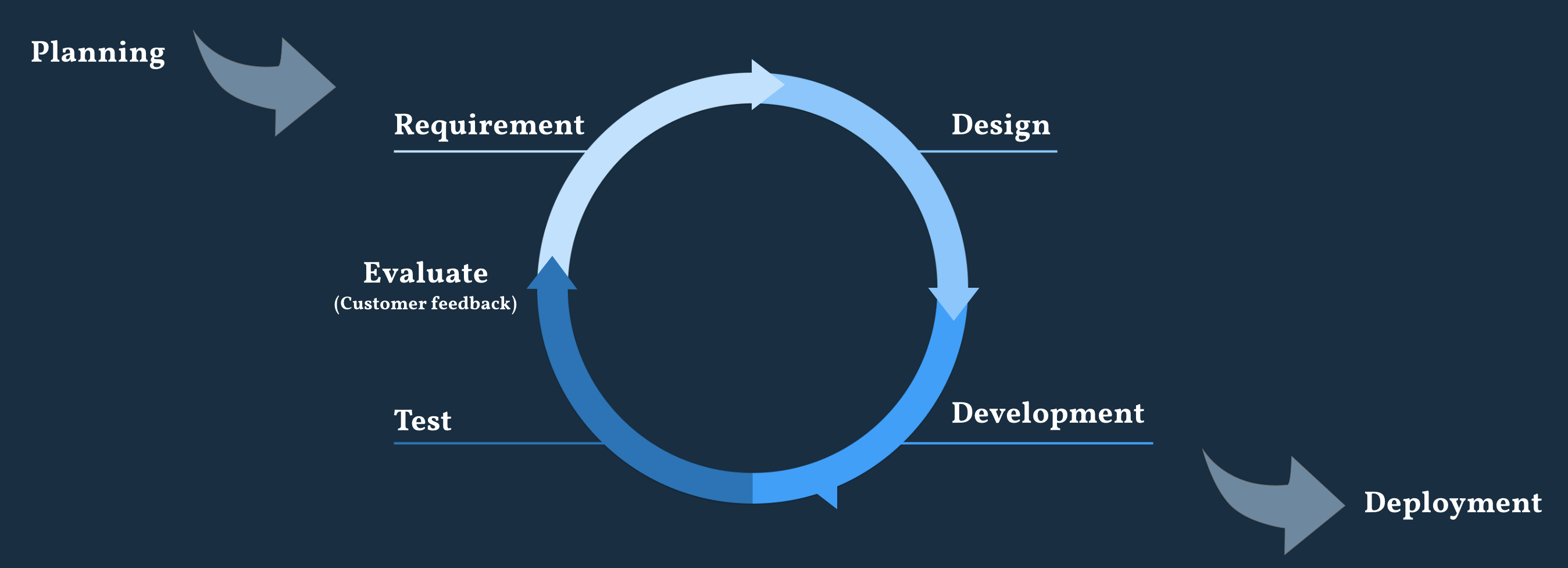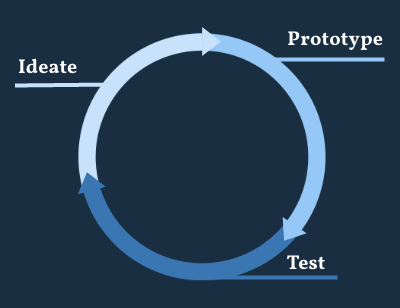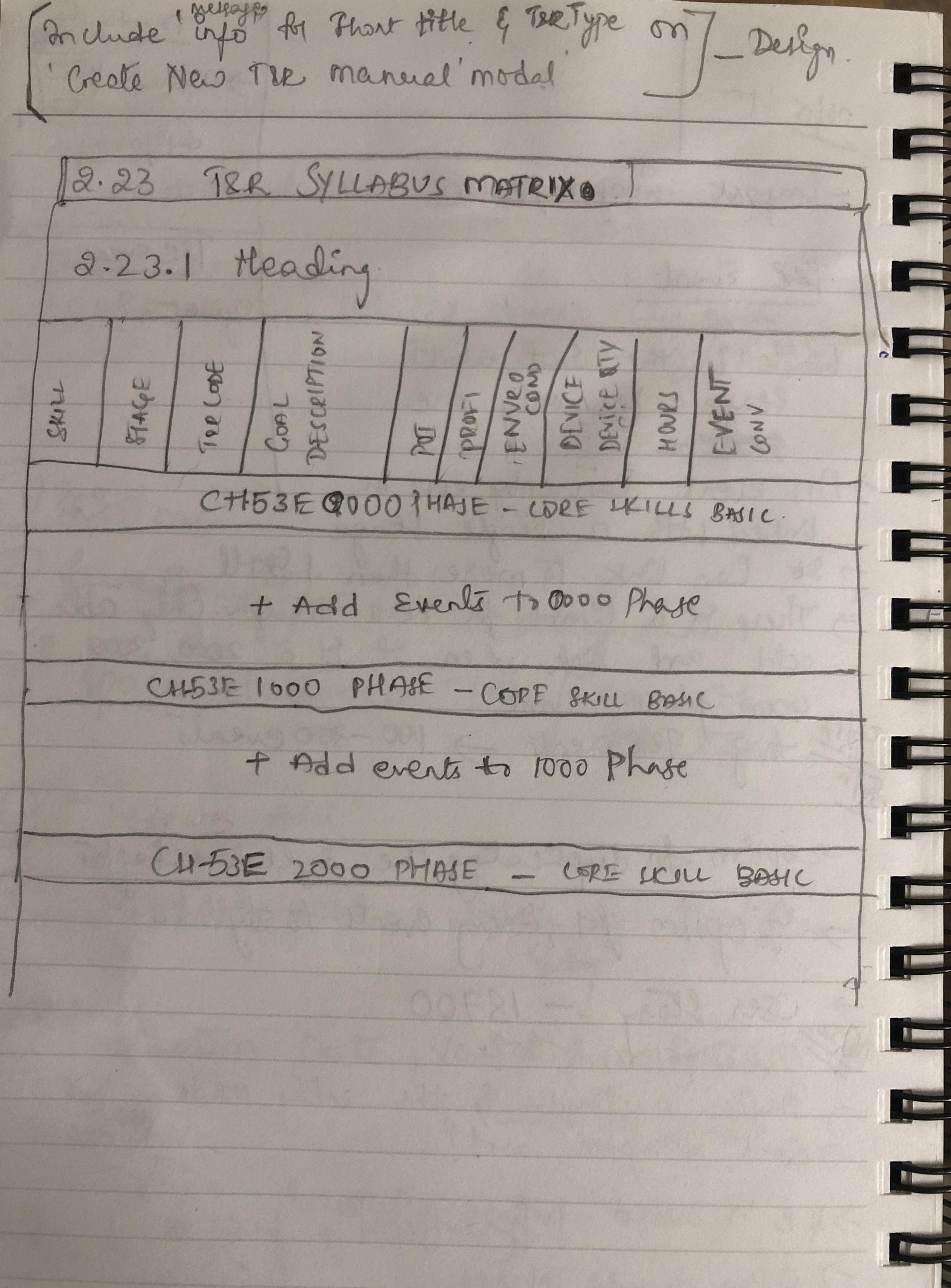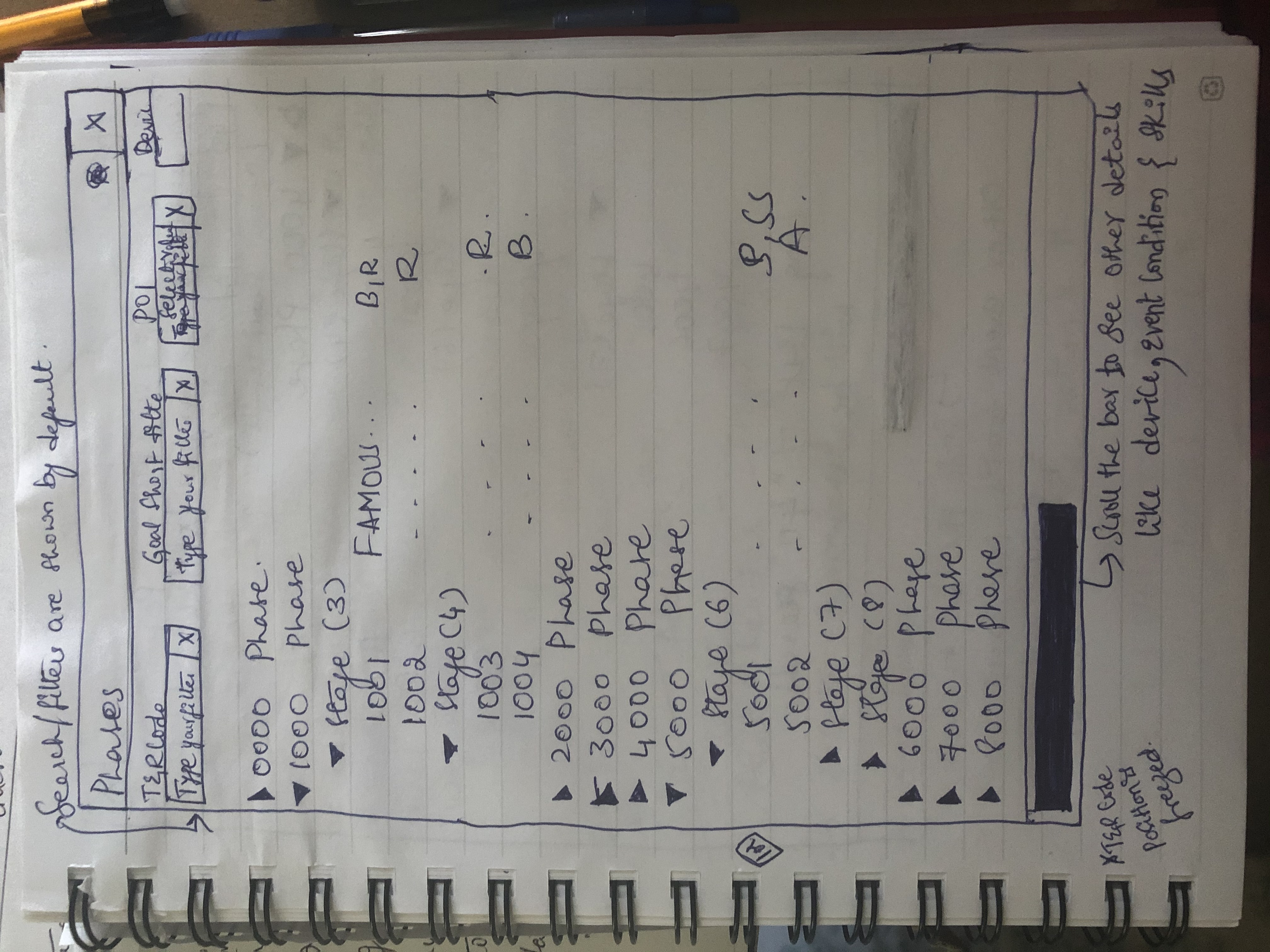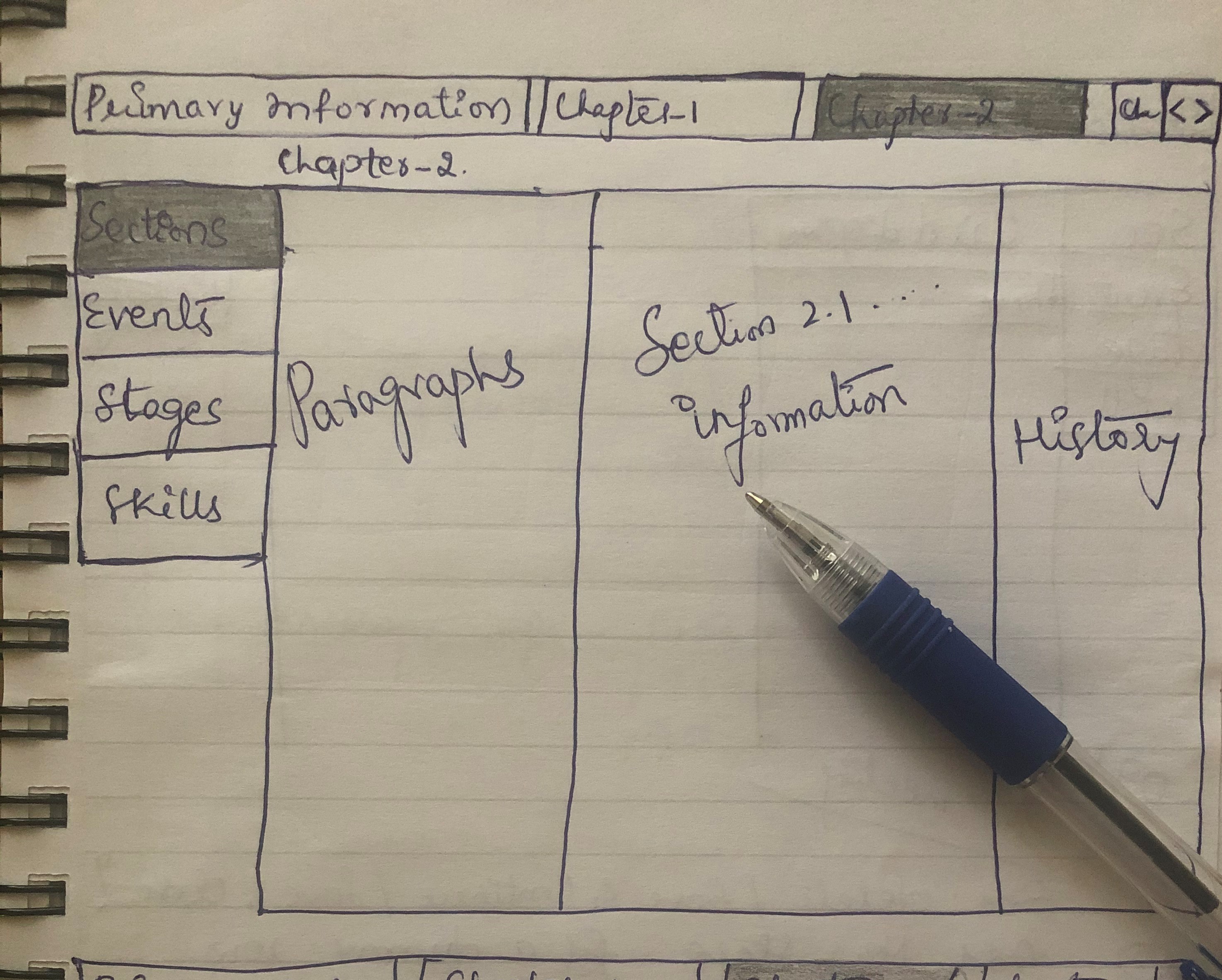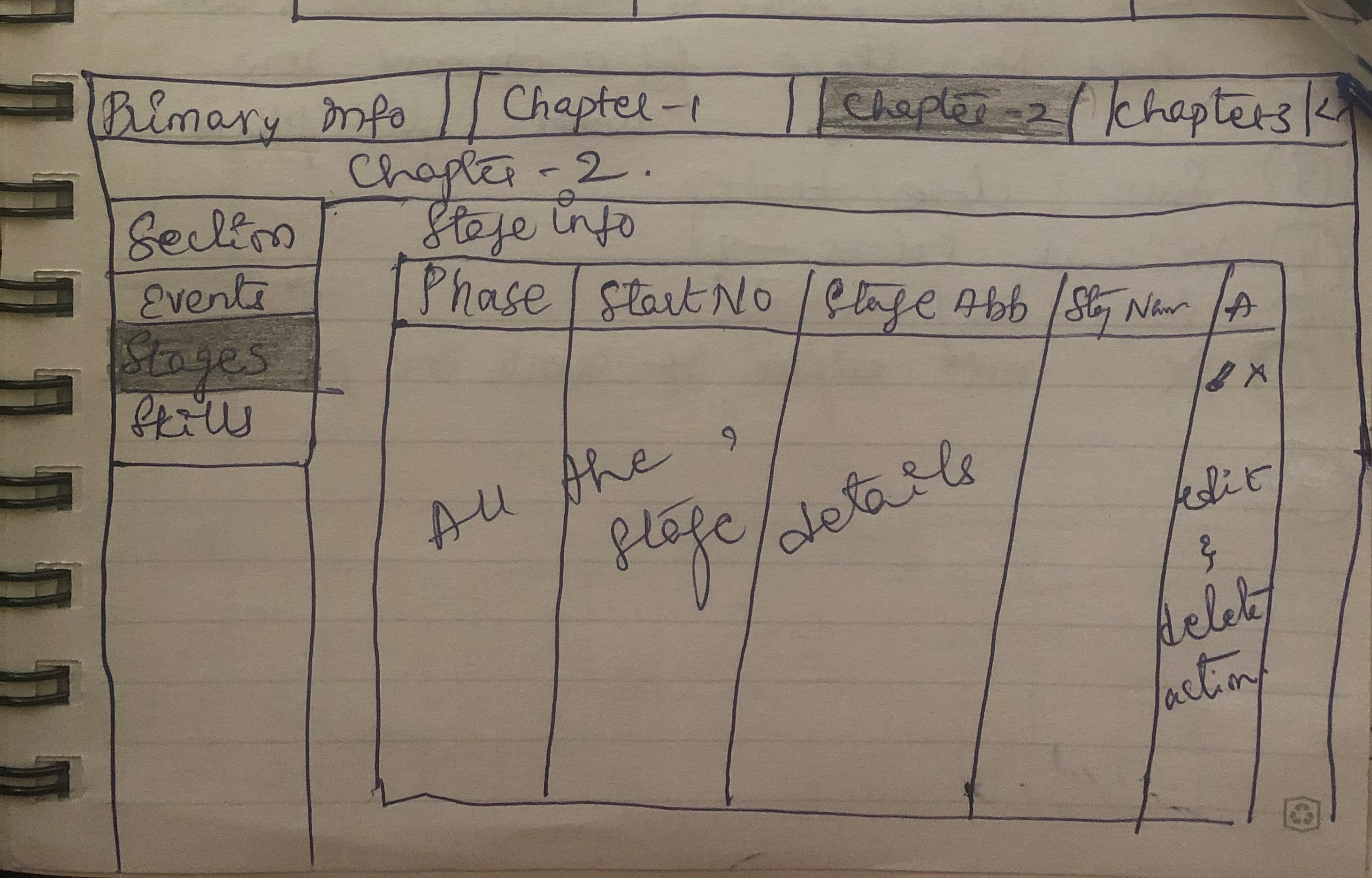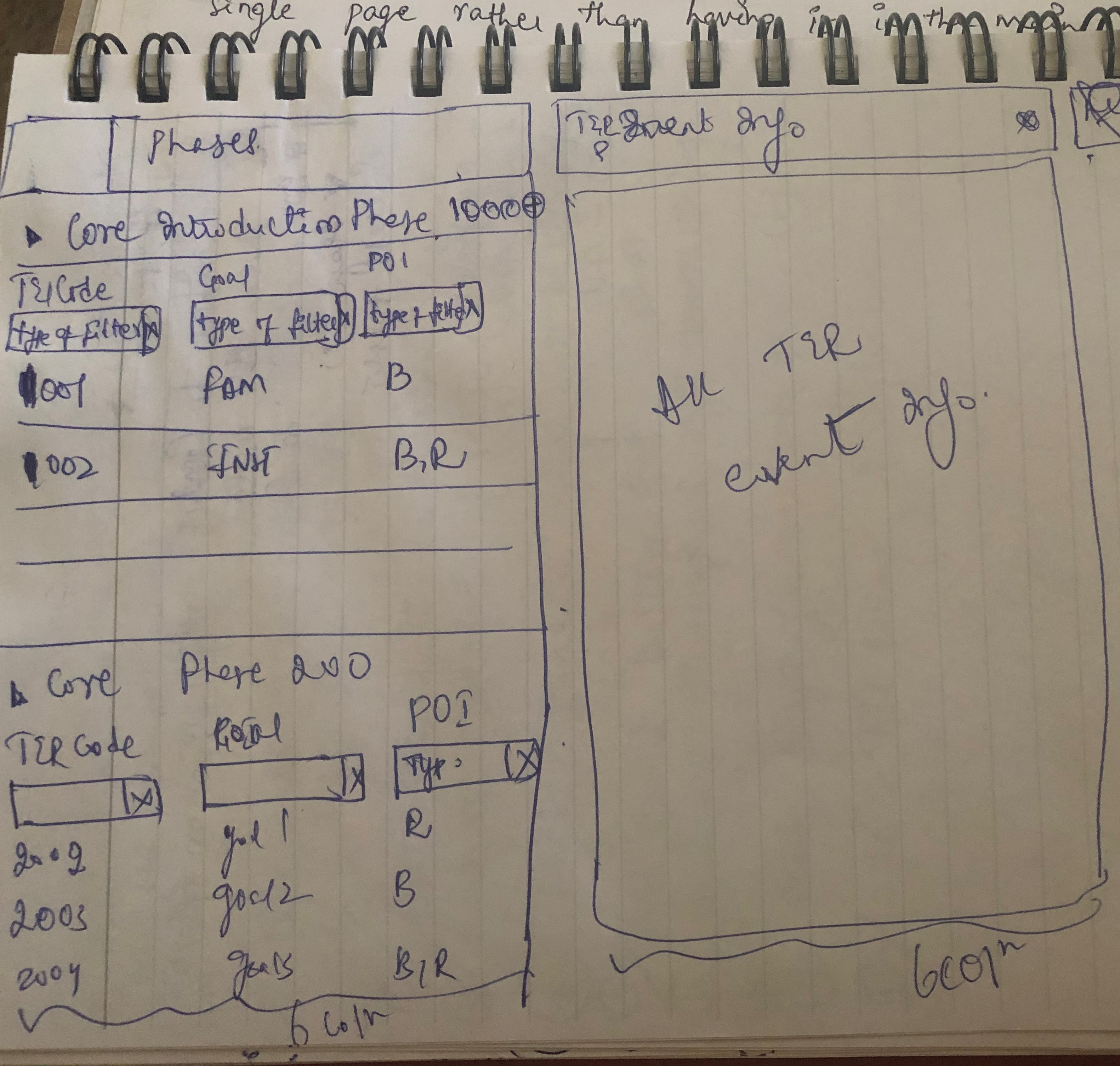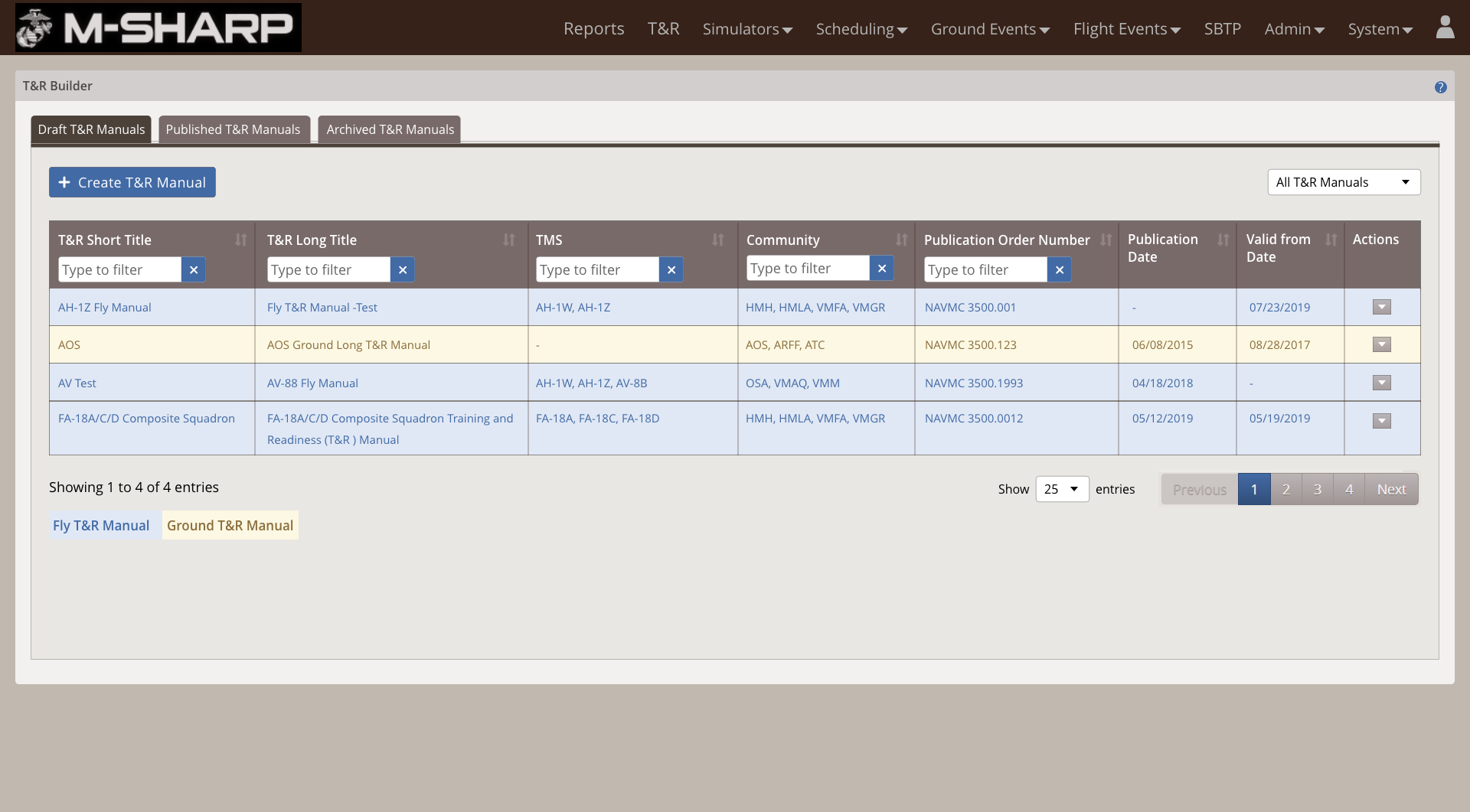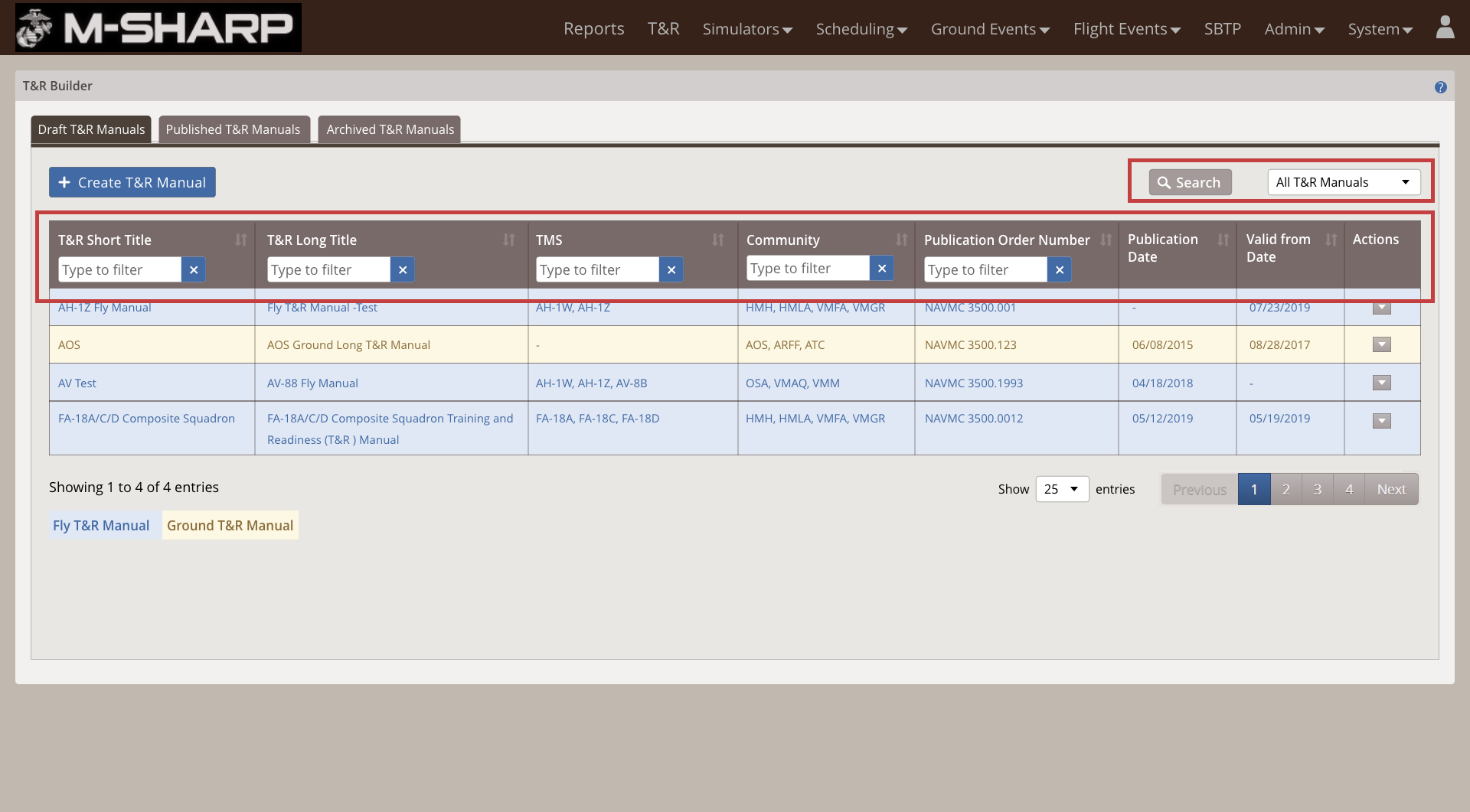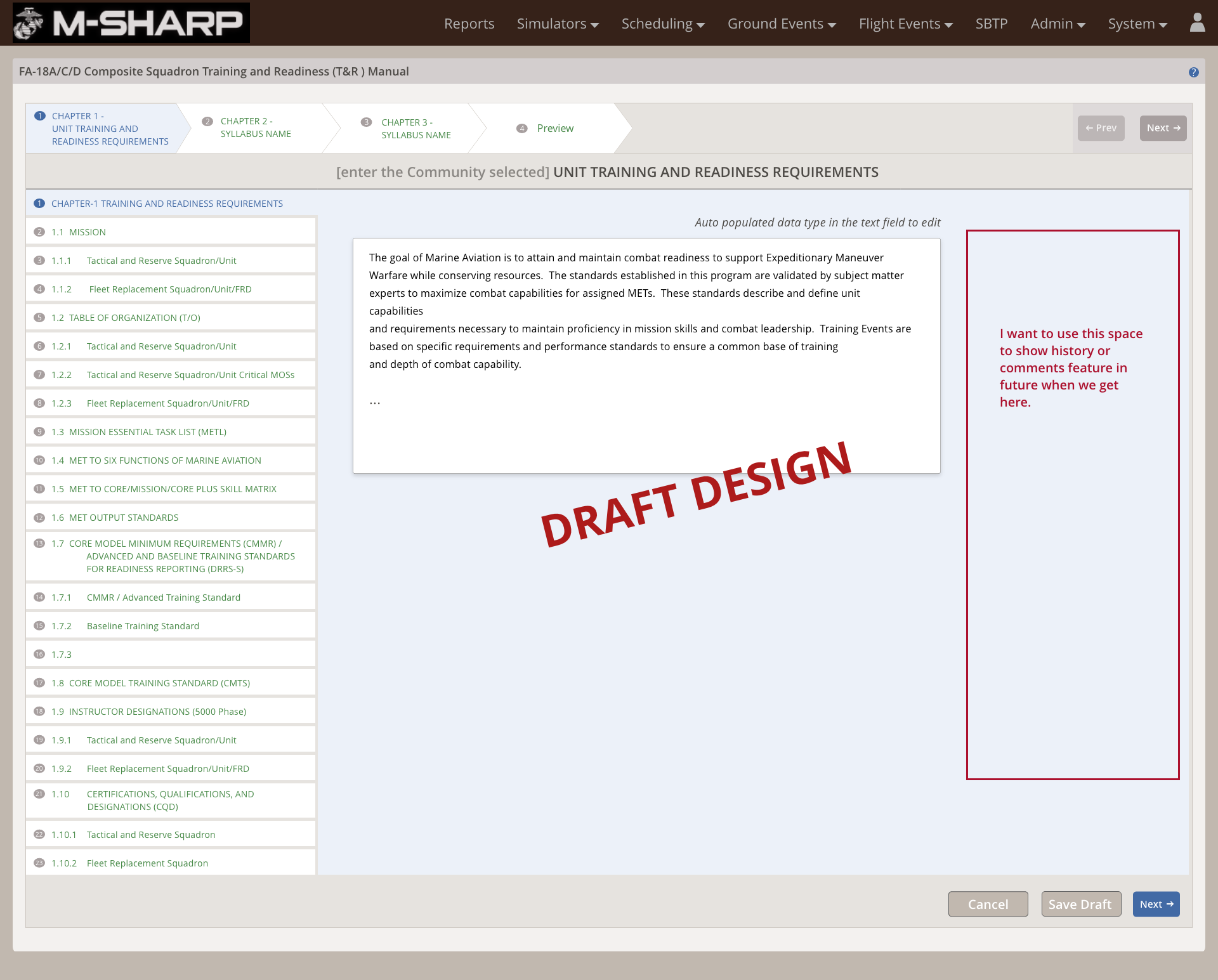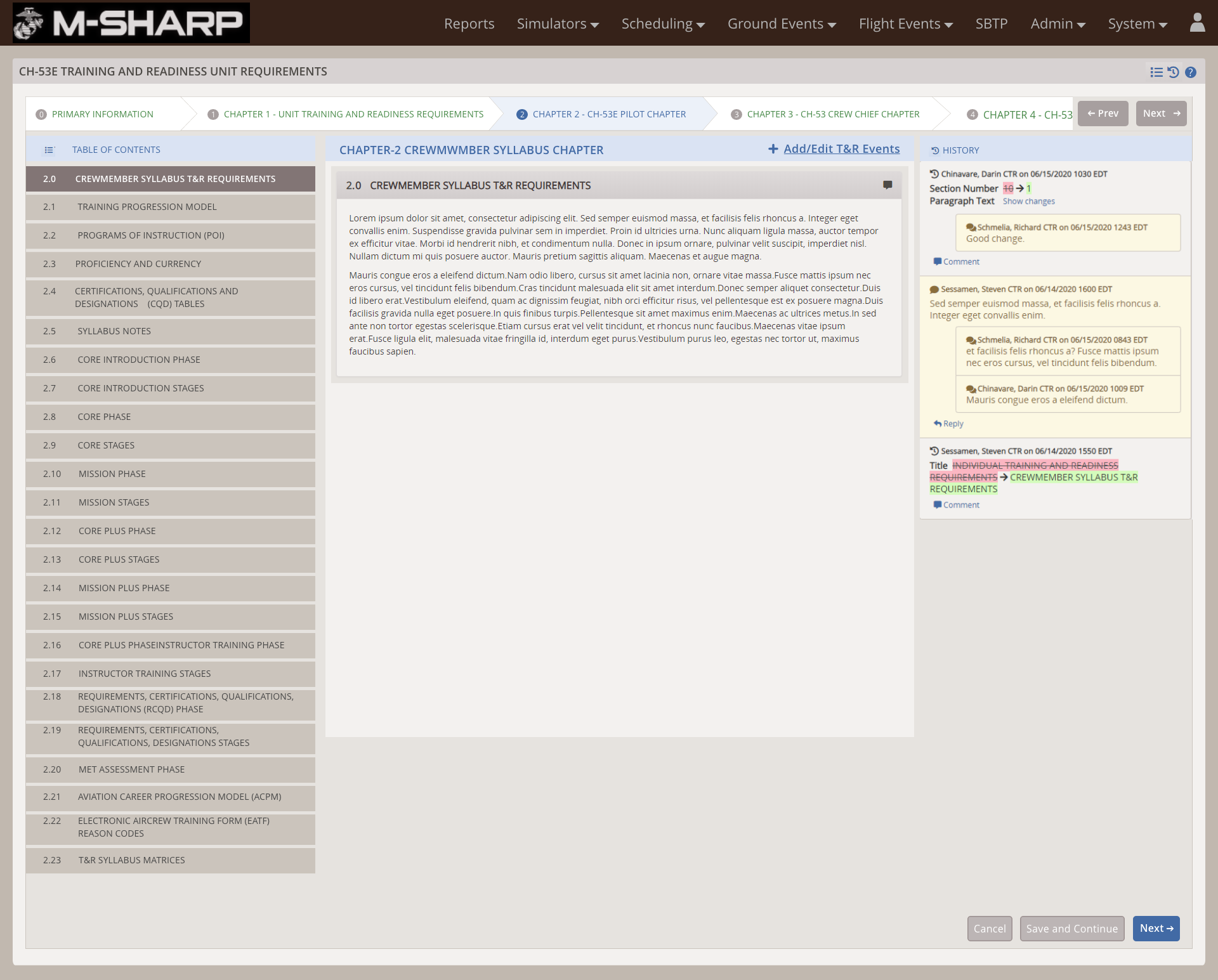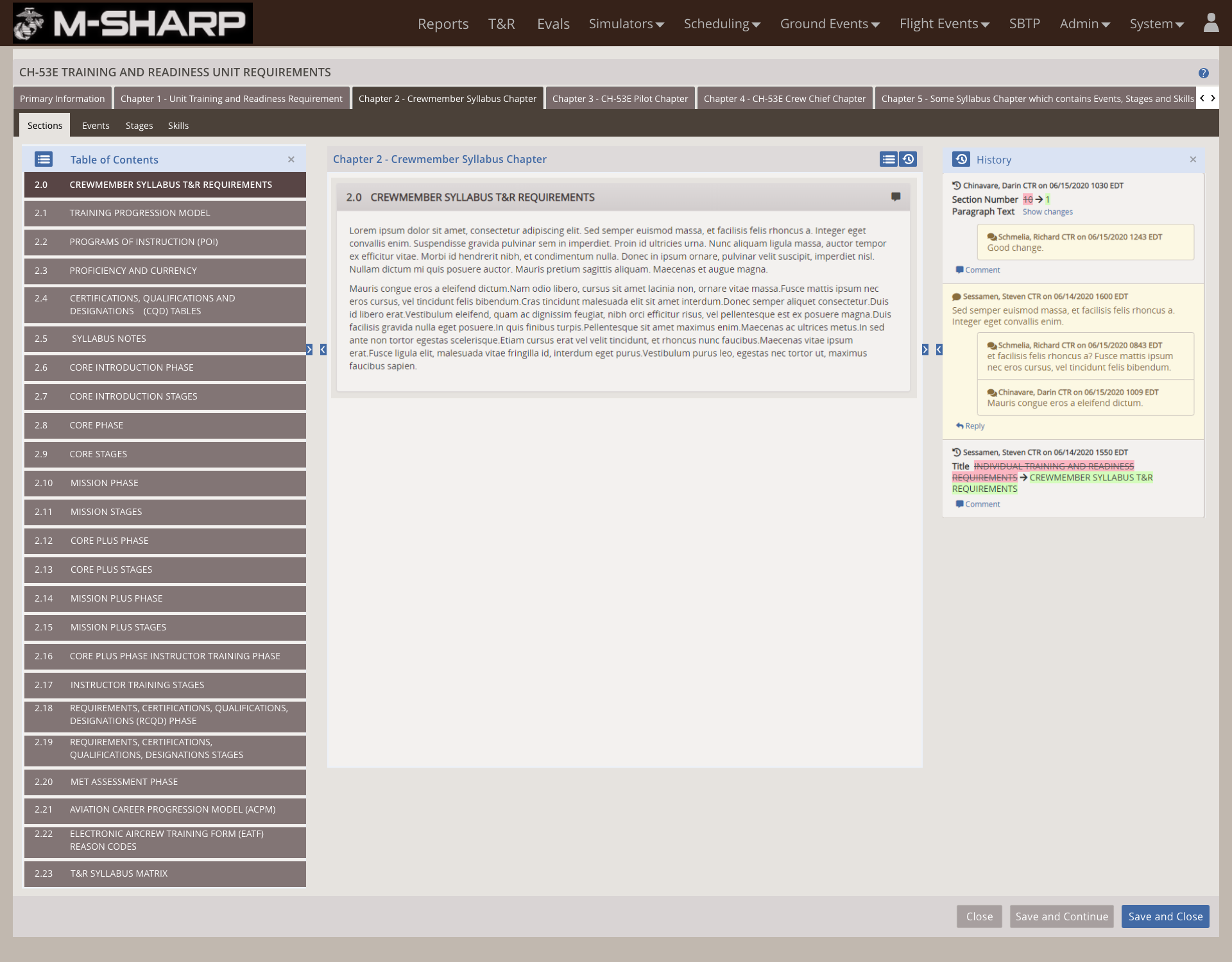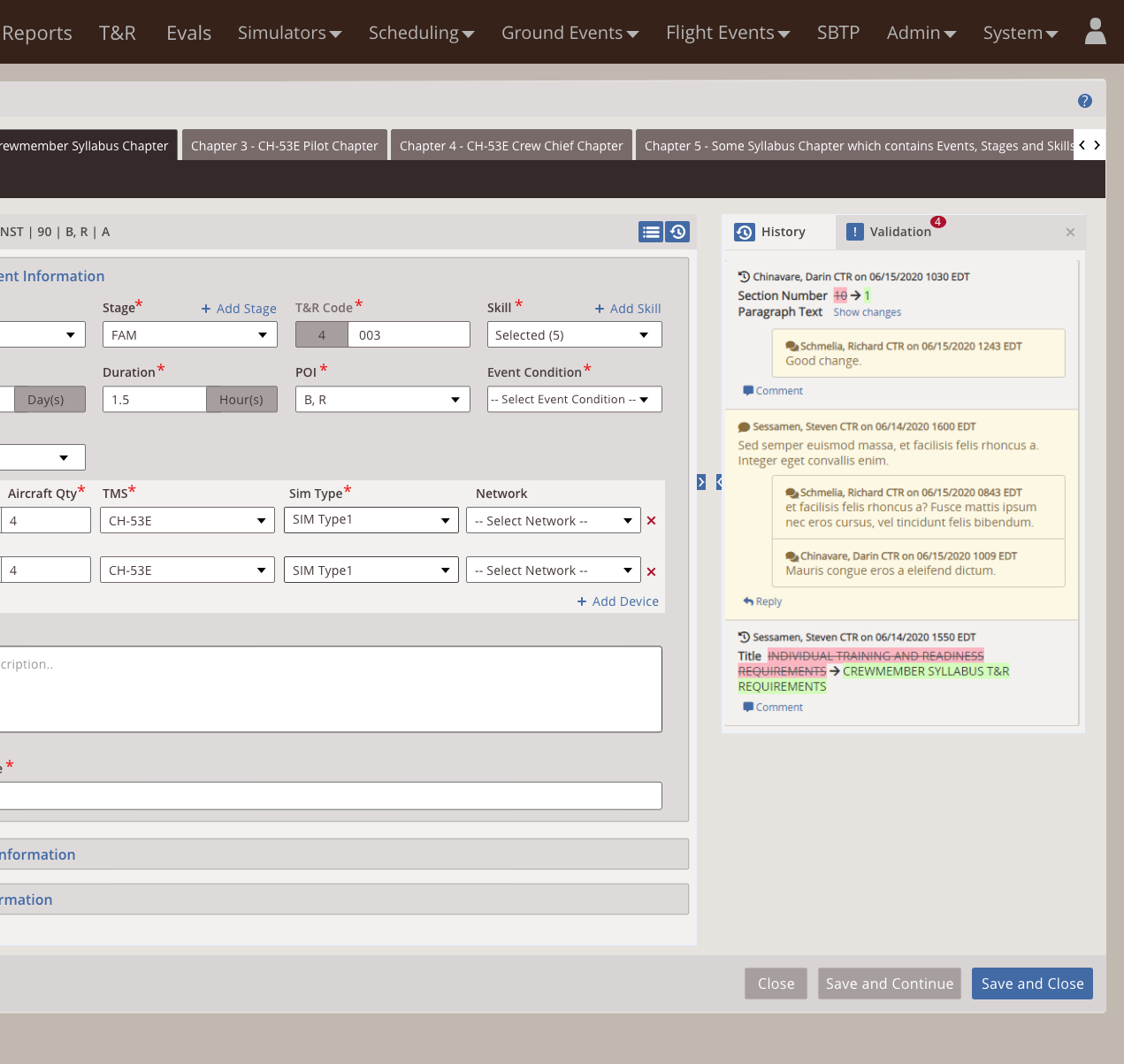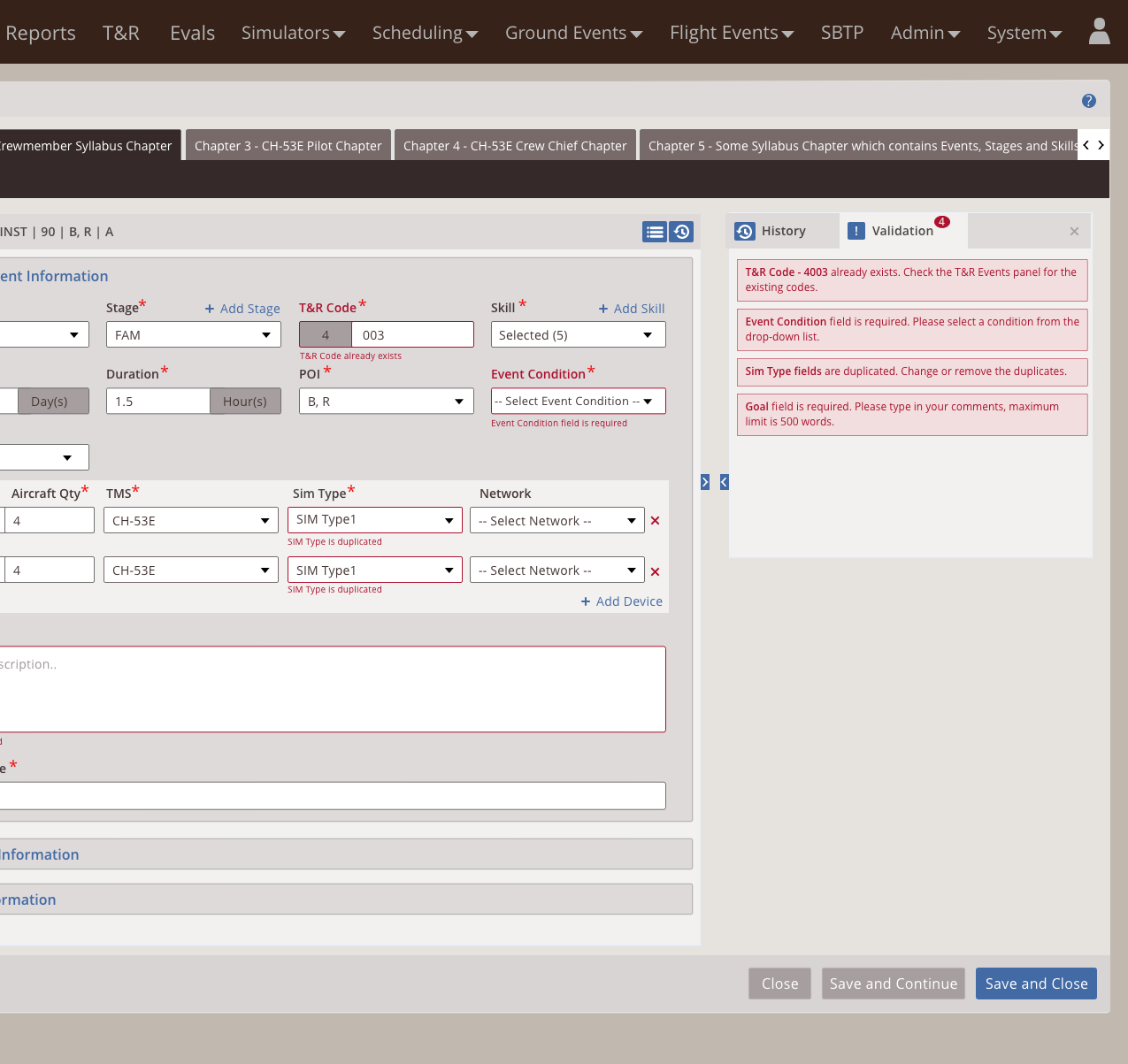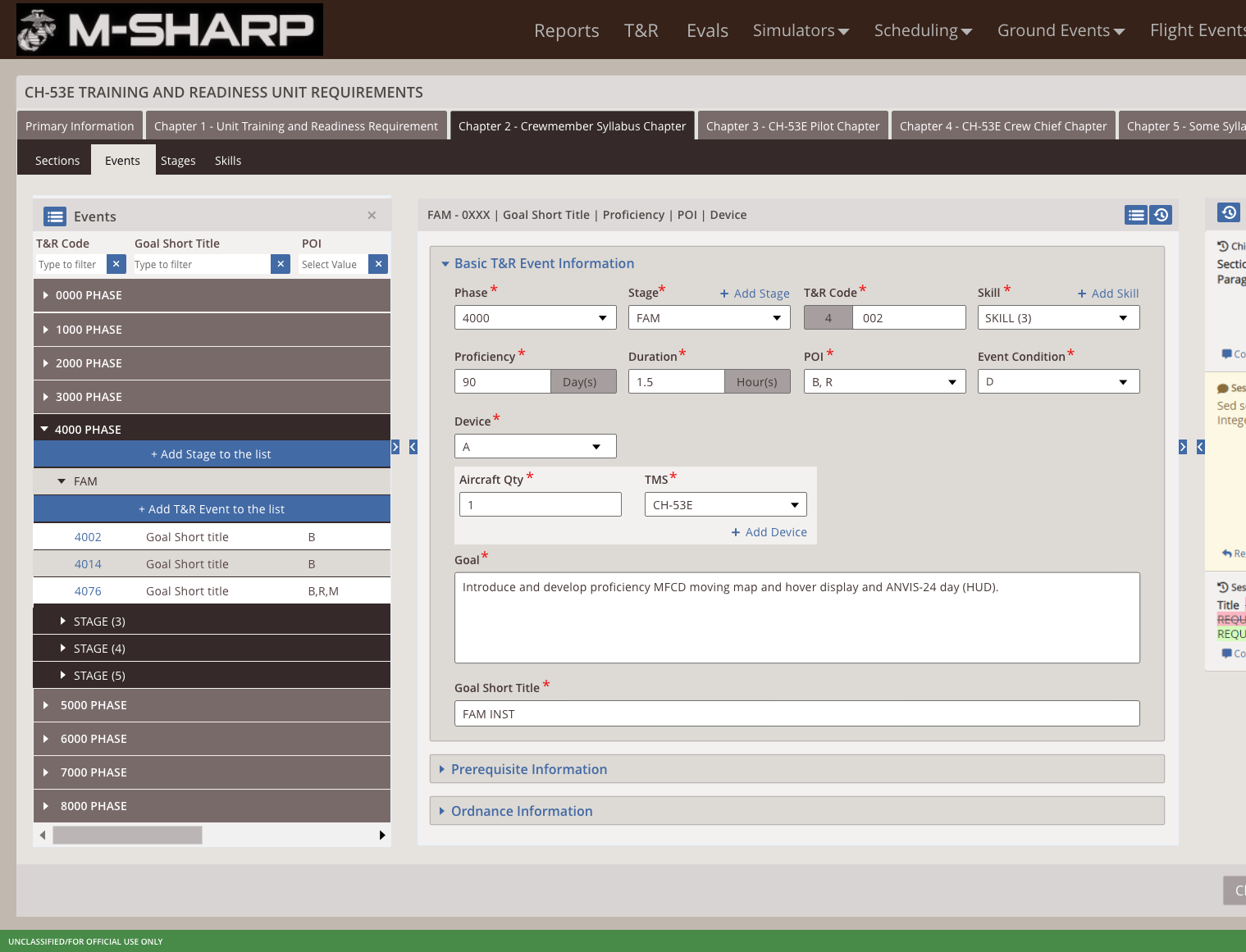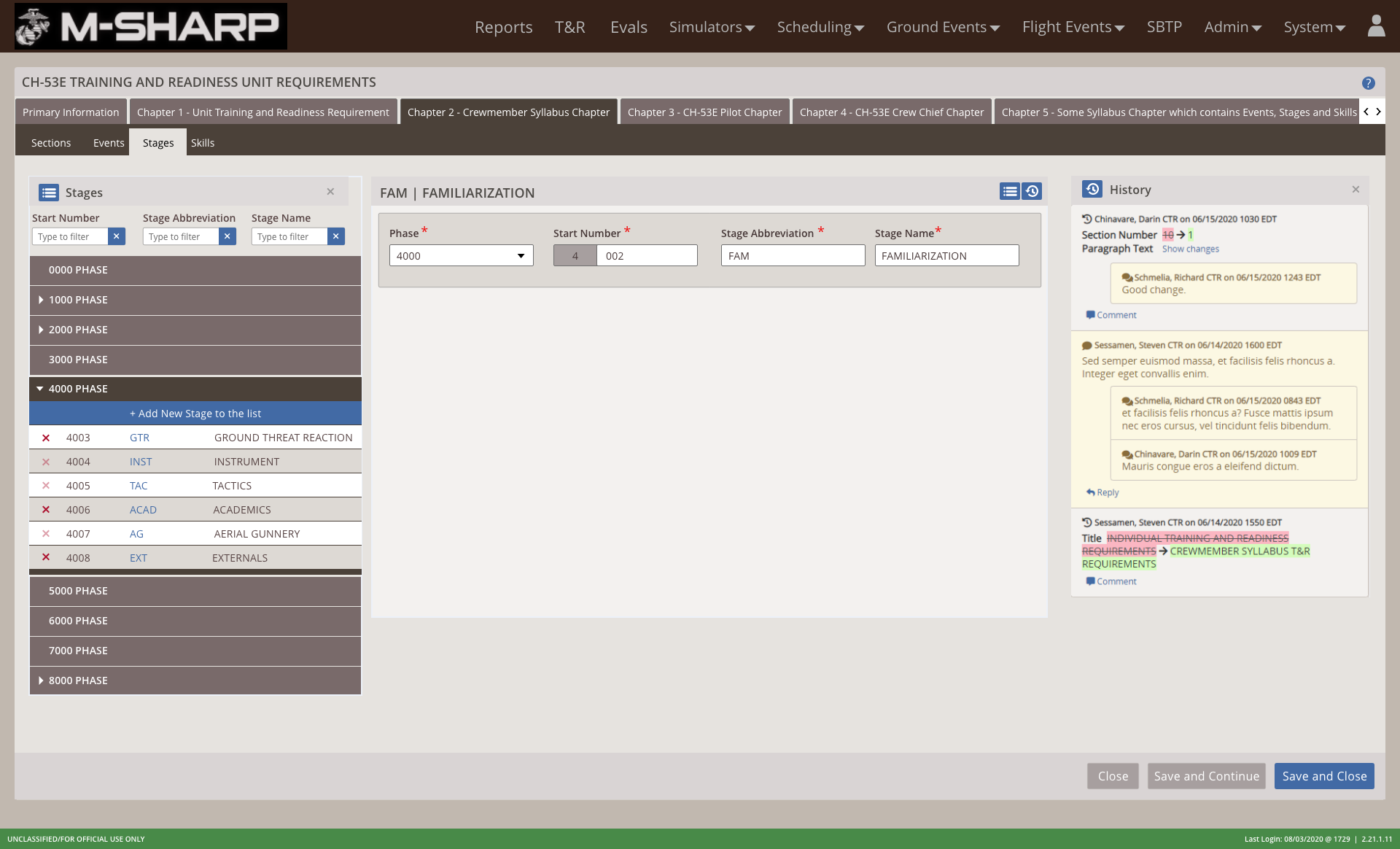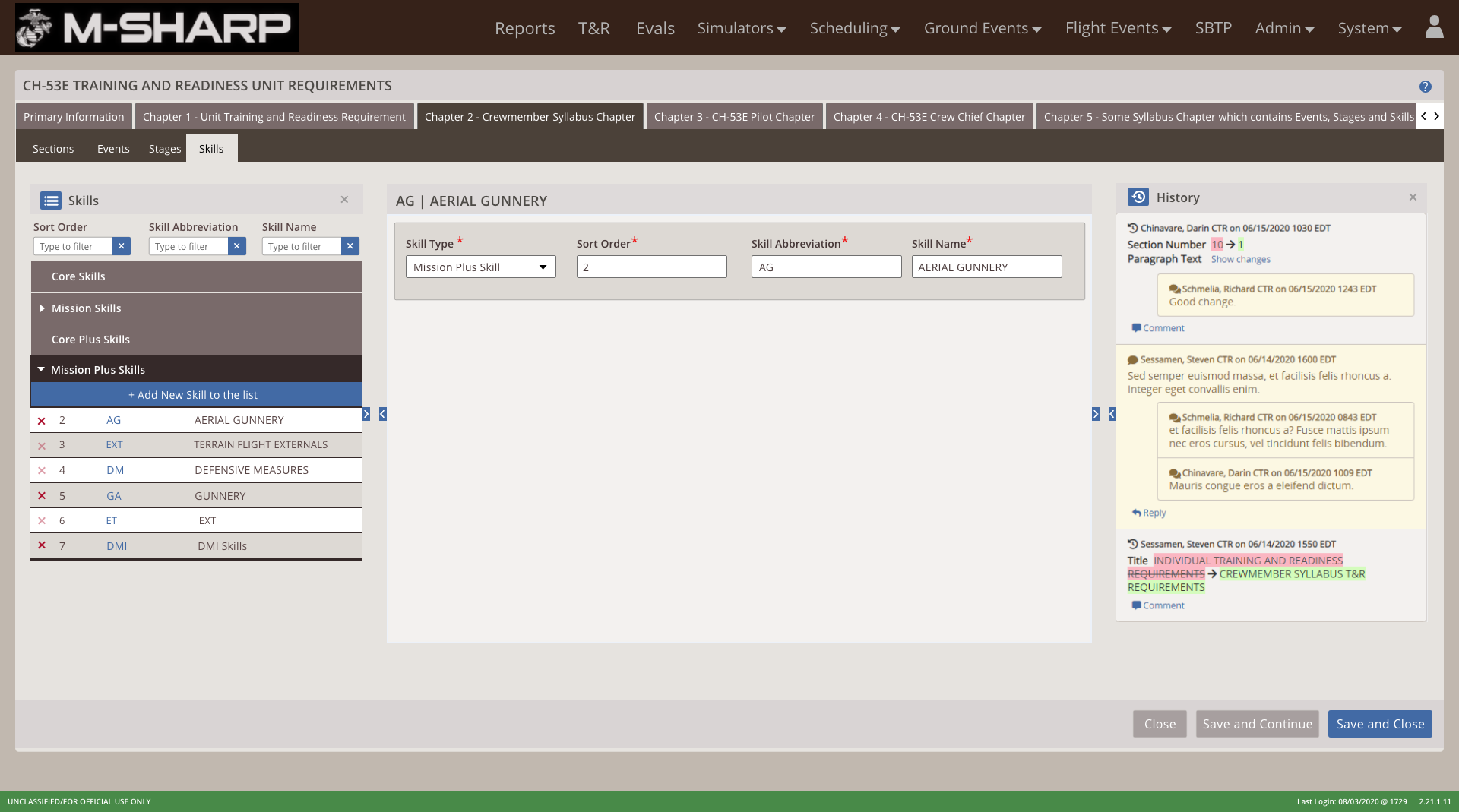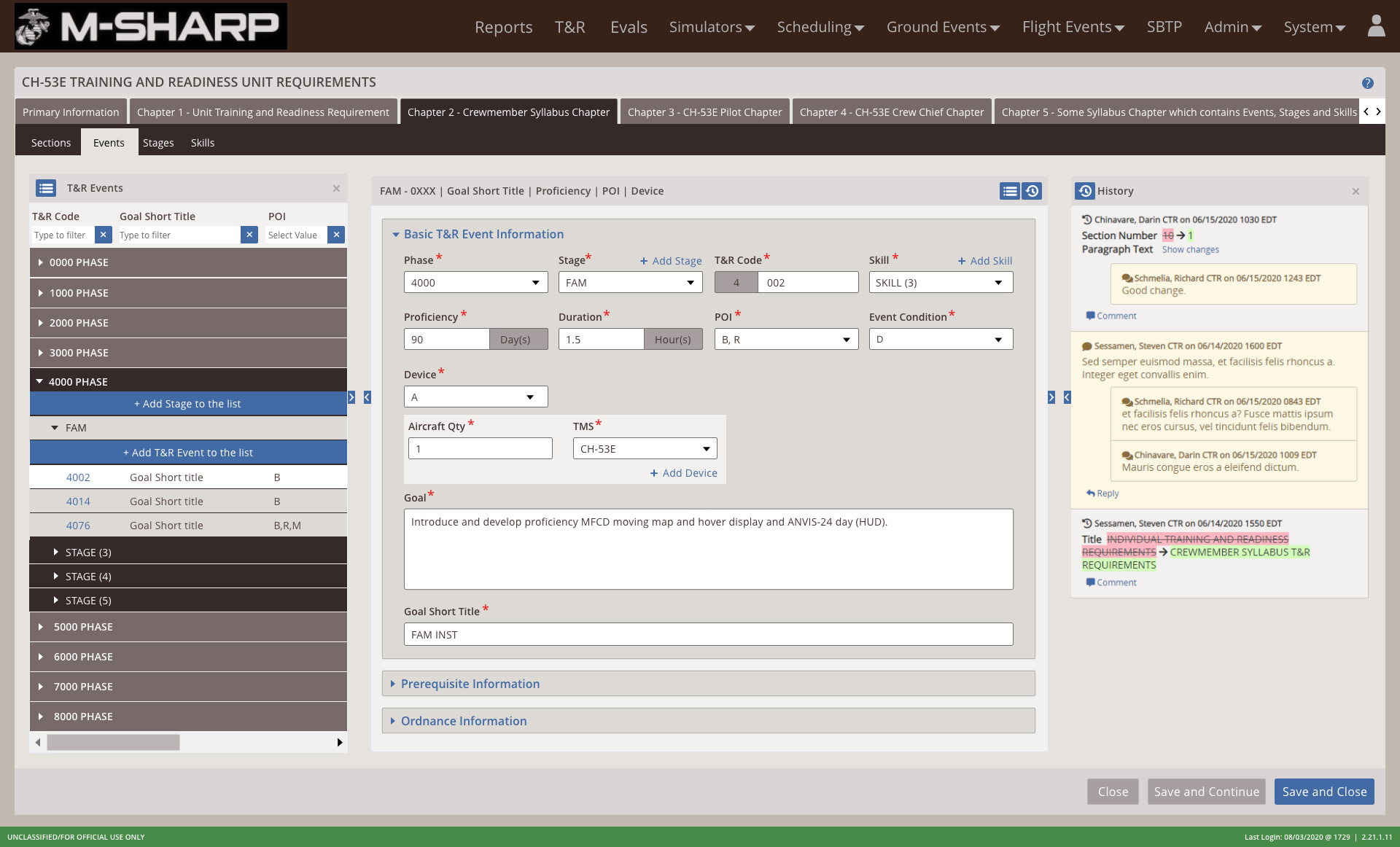
M-SHARP’s T&R Builder - Web-based software
The Marine Sierra Hotel Aviation Readiness Program (M-SHARP), is an automated, federal-owned
database and web-based software program that provides real time forecasting, scheduling,
execution, and reporting of accurate data and information for US Marine Corps aviation training
and readiness tracking.
Training and Readiness(T&R) Builder tool inside M-SHARP software
provides the option to create, edit, and publish draft/version T&R program manuals for the
Marine Corps.
Humans impacted 🏆: 100,000+
MY ROLE
Gather user requirements, research, product design from concept to production, user experience strategy, interactive prototypes, visuals, usability testing.
MY TOOLS

INTRO
T&R Builder is a new tool that will be added to the existing M-SHARP software, it can create/edit/publish a draft/version T&R manual. This Training and Readiness (T&R) Manual establishes training standards, regulations, and policies regarding the training of Marines in the required fields.
"We follow the design principle - Keep It Simple, Stupid"
GOALS
User Requirements
To design and develop a meaningful experience for the commanders to construct, attain and maintain the T&R manuals by strictly sticking to the user requirements.
Consistent
Consistency is the key. To be consistent throughout the M-SHARP software's design and development of the features.
Simplicity
Given the complex nature of the product and the workflows, it was essential to design an easy-to-use application where users achieve their goals within a few clicks.
DESIGN PROCESS
We followed an iterative process of planning, designing, developing and testing to build our product. We divided the complex product(T&R Builder tool) into smaller features to simplify our process and workflow.
“Being the sole designer, I got the opportunity to get involved in the whole product life cycle.”
Planning and Requirement Analysis
We started our process by planning the broken small features of the complex product. The Product Owners take charge by briefing out the user requirements and business goal to the team members (developers, designer, scrum master, QA engineer, program manager).
Our business goal is “Customer Satisfaction”
After our initial planning, we analyze the requirements and prioritize them according to the MoSCoW method:
- M - Must have this requirement to meet the user and business needs.
- S - Should have this requirement if possible, but project success does not rely on it.
- C - Could have this requirement if it does not affect anything else on the project.
- W - Would like to have this feature requirement but delivery won't be this time.
Once the requirements are prioritized, we dive deep into user context and empathize it. As both our product owners are marine veterans who have used and worked on the M-SHARP software for more than 10 years, they play a major role in advocating how the users think, feel and behave.
To understand more about the problem and user needs, I have attended a Training & Readiness (T&R) conference where I had the opportunity to practically observe how the Marine’s work on the manual, their workflow to baseline a manual and how standards are established. From these ethnographic observations, I have defined what can be improved.
Findings:
I designed the below T & R architecture that shows the types of manual's and how each type is structured within itself. This was helpful for the team members in understanding the layers in a manual.
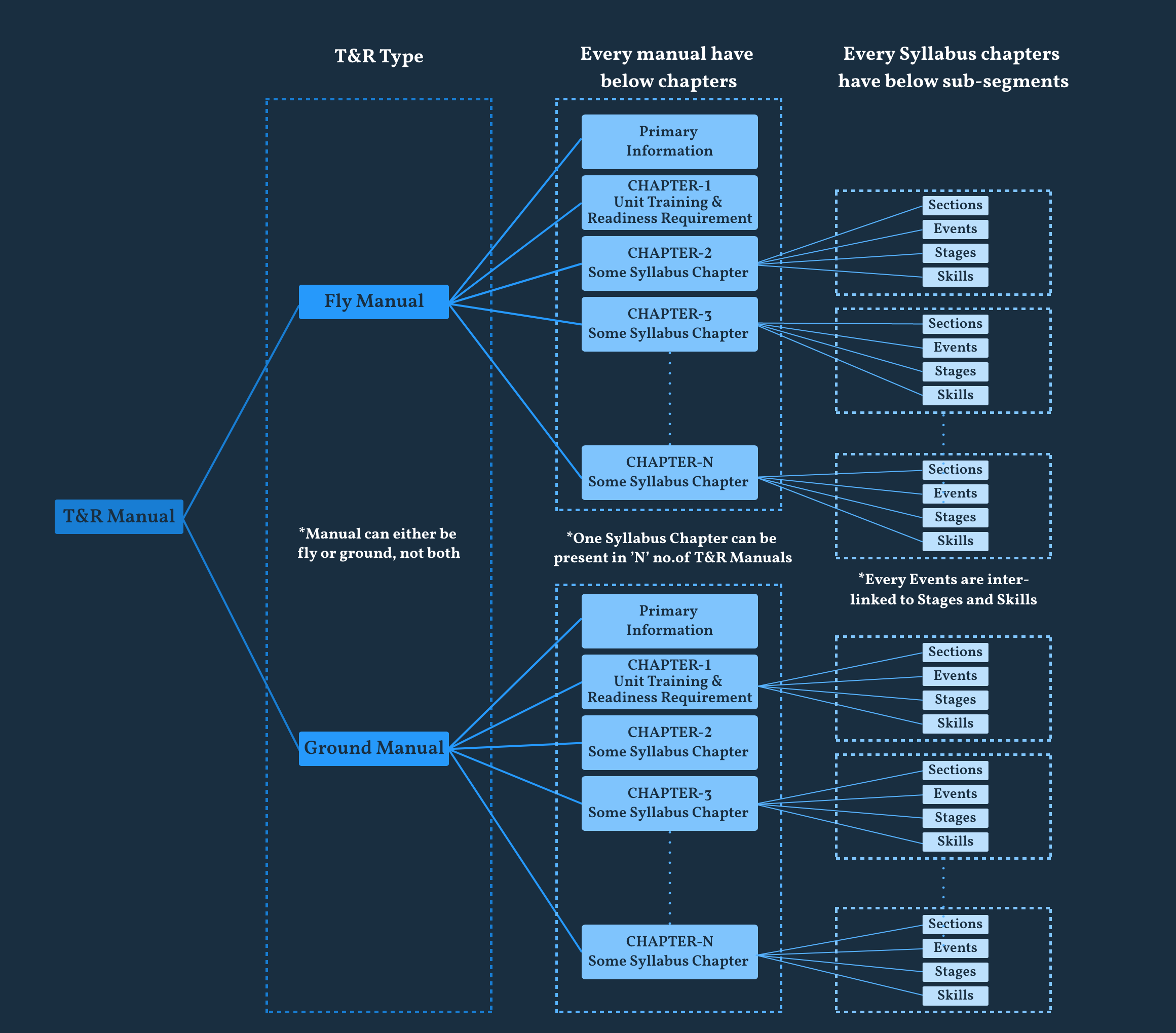
Design
Once we are done with all the “Why” questions in the analysis stage, now we are ready to find the “How” to solve the problem. Here in the Design stage, I follow a cyclic process of ideating, prototyping, testing and repeat | repeat | repeat. Iterative design helped us to improve usability and to understand the problem in the early stages.
"In an iterative design you can design it once but make it better as many times you need”
Ideate:
As we are ready with our user data in the Planning and Requirement Analysis Stage, I started to explore innovative solutions in this stage. I led the brainstorming sessions and prioritized ideas by breadth over depth as the main focus is getting a diverse range of ideas to prototype and test.
"Emphasis on quantity rather than quality during ideation.”
We are a small team of 4 (designer-me, product owners-2 and solutions architect-1; we call ourselves as Solution’s team 😄) so we generally refine and narrow down the ideas by discussing the pros and cons of it.
Rapid Prototyping
Now is the time to prototype the ideas which were narrowed down and to check their feasibility. Initially, I work on sketching all the possible ideas before I move on to designing the high-fidelity wireframes and prototypes. In this initial phase, I mainly care about the functionality, key feature to add in and the basic structure.
"A wireframe acts as a visual representation for designer’s ideas”
Design Testing
I test these low-fidelity wireframes with my product owners to collect feedback. I cross check whether the features I designed are aligning with the user requirements or not.
"In order to create the best experience for your user, you need to keep iterating & testing vigorously and I do follow this in my process”
High-fidelity wireframes - Once the low-fidelity wireframes are approved by the Product Owner, I design high-fidelity wireframes and prototypes using Adobe XD. From this point, I focus on the visuals and user flow of the software and finally demonstrate the designs to the developers and product owners for further feedback. In the next section, you can look at some of the key features that I've designed.
FEATURES
Homepage Content layout
Draft, Published, archived tabs
I structured the homepage into 3 tabs(Draft, Published and Archived) based on how a T&R manual is processed rather than showing the whole list of manuals at the same place.
- A manual is created by entering all the details shown on “Create T&R Manual” modal.
- Draft T&R Manual tab, lists all the draft manuals.
- Published T&R Manual tab, lists all the published manuals.
- Archived T&R Manual tab, lists all archived manuals.
Color code for T&R type
From my research I found out that there are 2 types of T&R Manuals : Fly and Ground and different commanders work on both the manuals.
So to make it easy for them to look at the list, I differentiated Fly and ground manuals by color coding the background row & text. Provided a legend at the bottom for a first time user to understand the color code.
Search & Filter options
- Simplified the filter feature in the 2nd iteration. Provided a search text box with-in the columns to narrow down the content much faster.
- Provided overall page search feature irrespective of the fields.
- As different commanders work on Fly and ground manuals, a quick filter was provided as a dropdown option to show specific selected T&R type is added. Dropdown list contains “All T&R Manuals, Fly T&R Manuals, Ground T&R Manuals”
Manual Structure
Left, Center, Right panels
I have designed the manual structure into three panels: Left, Center, Right.
- The left panel acts like an index.
- The center panel provides a detailed information of whatever you select in the left panel.
- The right panel shows a history of your actions.
Each chapter has sub-parts called Sections, Events, Stages and Skills. I have added a second level tab where you can access these sub-parts.
History & Validation
History panel
- All user history is recorded and displayed in this section.
- Manuals are accessed, updated and reviewed by multiple marine commanders, so it is important to show the history actively.
- I have provided an option to reply to comments that are logged as a event in the history panel.
Validation panel
- Any error that occurs on the central panel is displayed in the validation panel to the right.
- Clicking on a specific error will take the user to the respective field where they can correct the error.
- The text appears in a red color so the user's attention is focused to this section.
Events, Stages & Skills
Events
- Events sub-tab contains pre-defined Phases under which you can create/edit T & R events.
- Events and stages are grouped into their respective phases which is displayed in the left panel.
- I have added an in-panel search which can be used to filter the events using event specific fields like T & R Code, POI, etc.
- Selecting a specific event, we will display the event's detailed information in the center panel.
Stages
- Stages sub-tab contains pre-defined Phases under which you can create/edit stages.
- Stages are grouped into their respective phases which is displayed in the left panel.
- I have added an in-panel search which can be used to filter the stages using start number, stage name and stage abbreviation.
- Selecting a specific stage, we will display the stage's detailed information in the center panel.
Skills
- Stages sub-tab contains four pre-defined Skills under which you can create/edit skills.
- I have added an in-panel search which can be used to filter the skills using sort order, skill abbreviation and skill name.
- Selecting a specific skill, we will display the skill's detailed information in the center panel.
Panel Resizing
- I have designed the panels left, center and right in a 3-6-3 column width by default.
- All three panels can be expanded.
- The left and right panels can be hidden but the center panel is always visible.
- This is helpful in cases where there is no information in the right panel and that can be hidden to provide a better view for the other panel.
DEVELOPMENT
The coding process begins after I share my designs and I assist the development team with any design or functionality related queries. I make sure that there aren't any design issues and the developers have followed my design specifications.
TESTING
Once the code is reviewed and pushed to the Testing environment, it’s time for quality engineers to test for bugs or issues that might have been overlooked during the implementation step and fix them. I support the quality engineers by testing UI functionality. I ensure that the functionality is as per the designs I've provided.
EVALUATION
The last stage of the iterative process is evaluation. Product Owners demonstrate the developed features to the Marine Captain(our customer Marine Corps) to get the feedback and check if all the requirements are met. I observe and note down any additional requirements or changes that the Captain requests for. These changes will be added in the next iteration.
KEY LEARNINGS
Perks of being a sole designerAs a sole designer on the team I get to interact with people from multiple areas of expertise and increase my user interaction time which helps me enhance my ability to think as a user and design for the user.
Design is everyone’s problem in the teamAs a team, not only the designer but if the developers, product owners and quality engineers also think from a user’s perspective during product requirement gathering, coding & testing a better product can be built which the user relishes.
FUTURE WORK
Provide T & R manual versioning.
Produce a printable manual.
